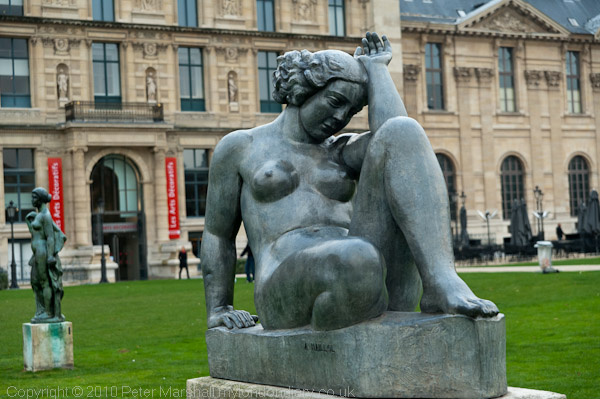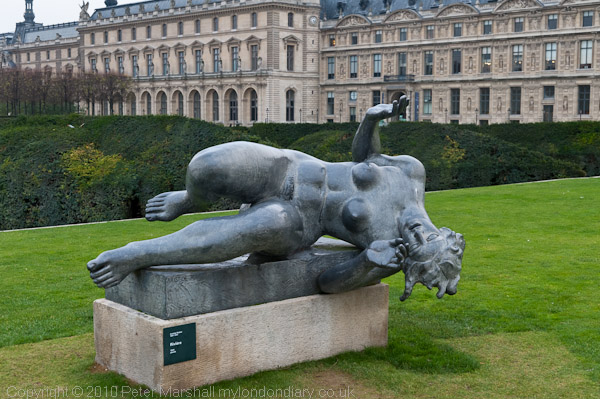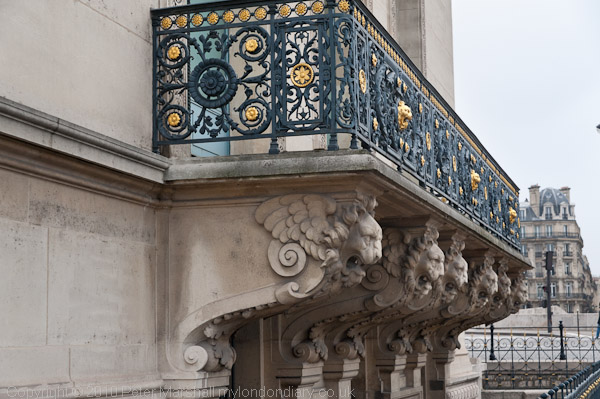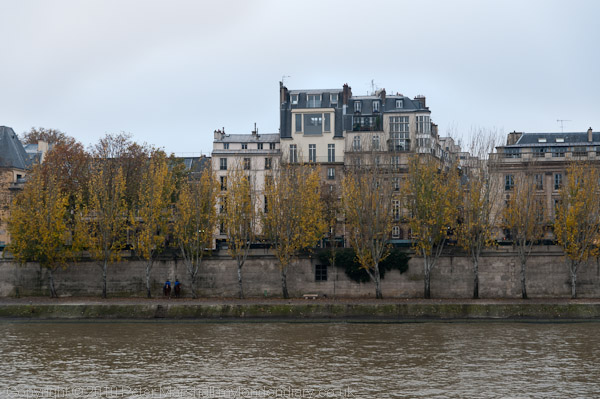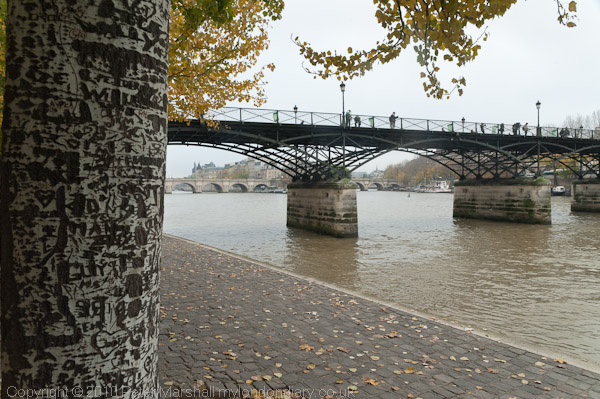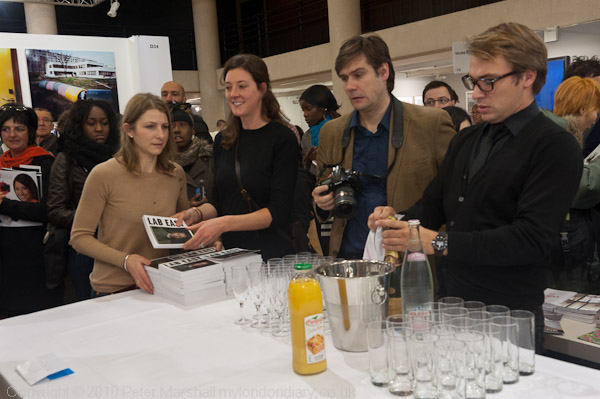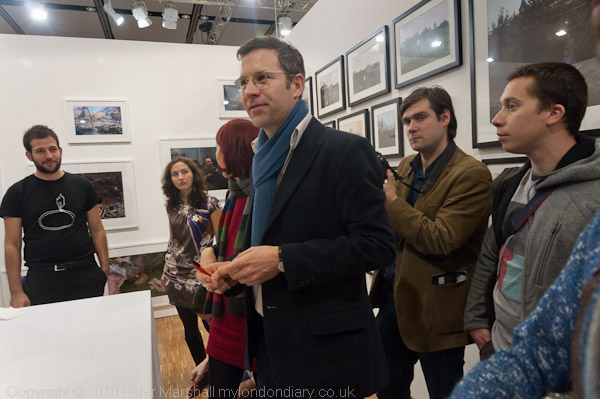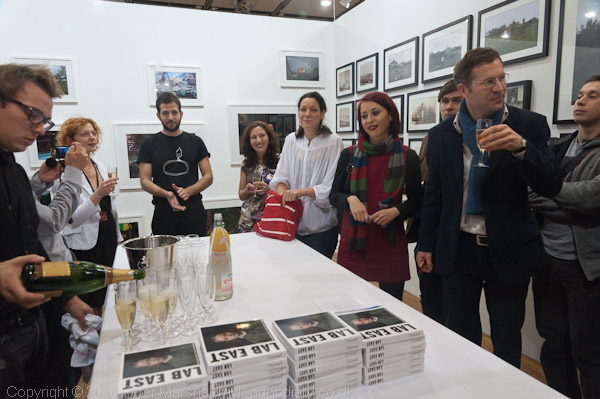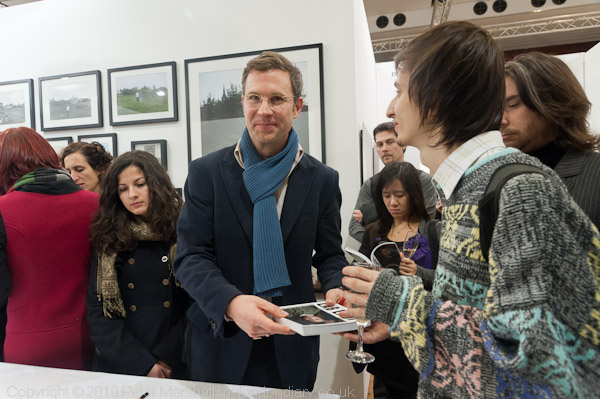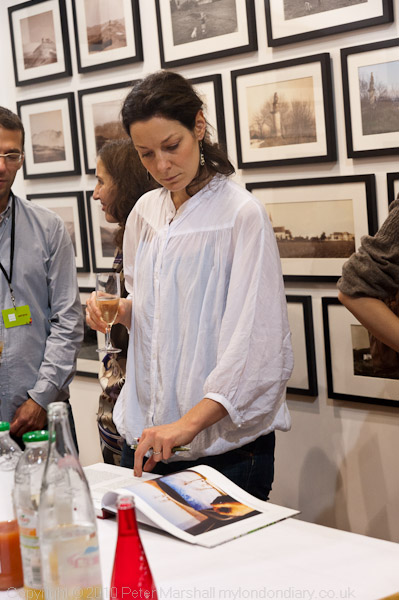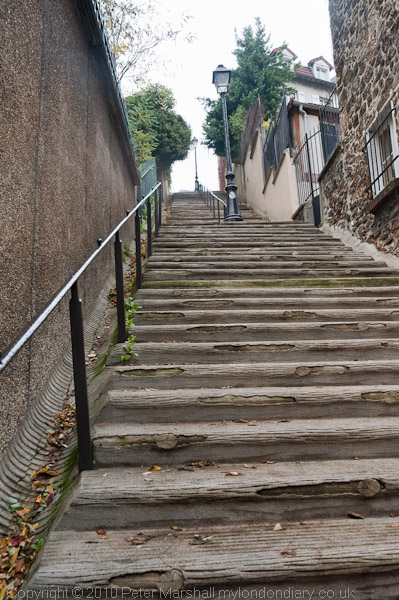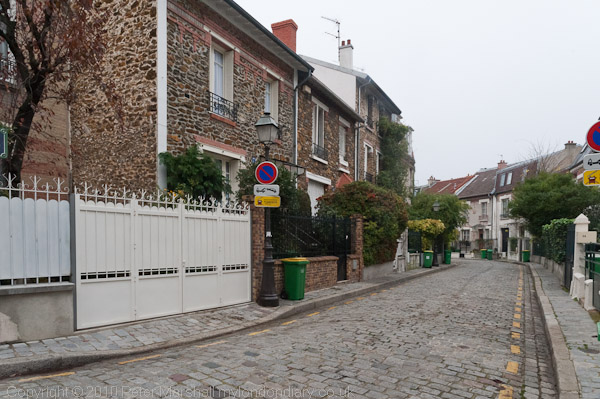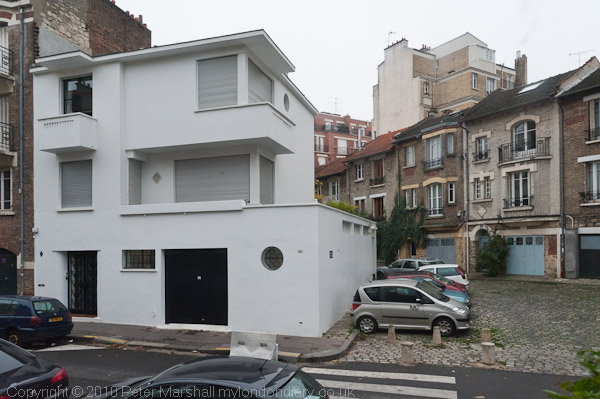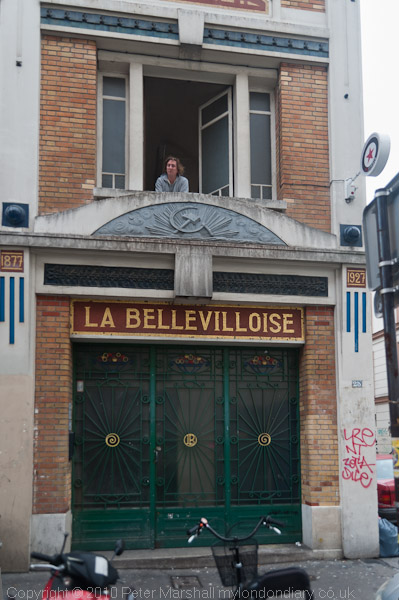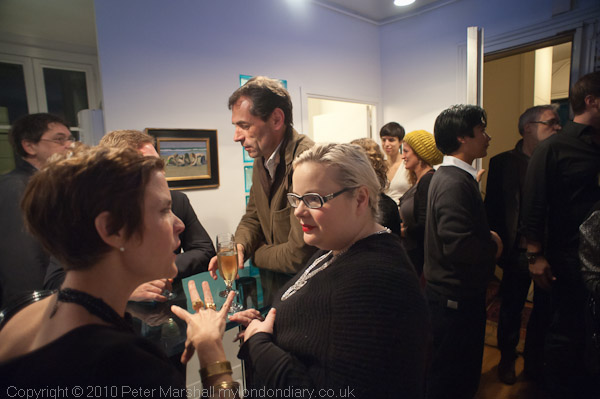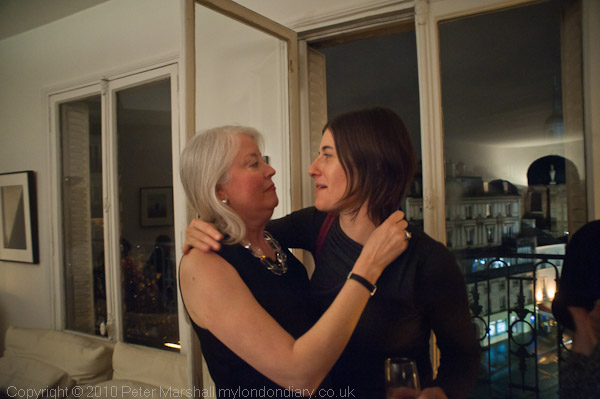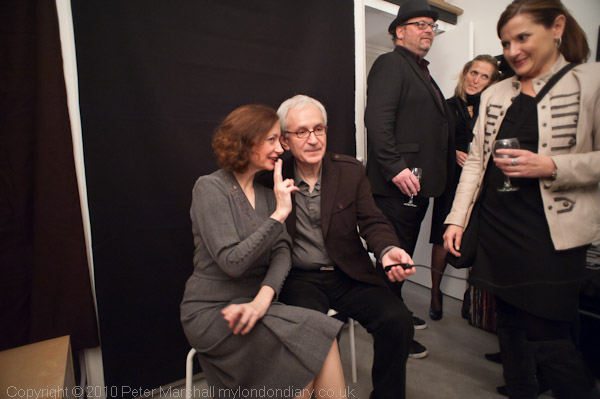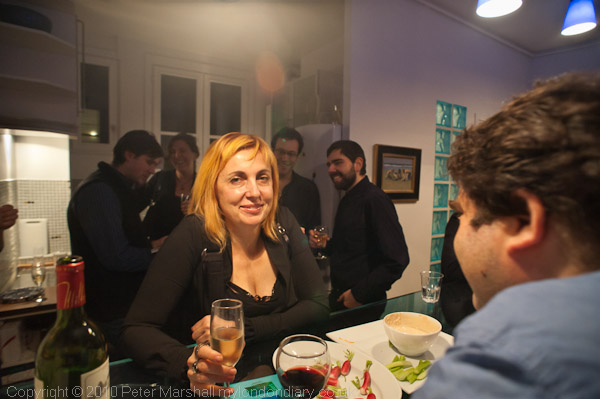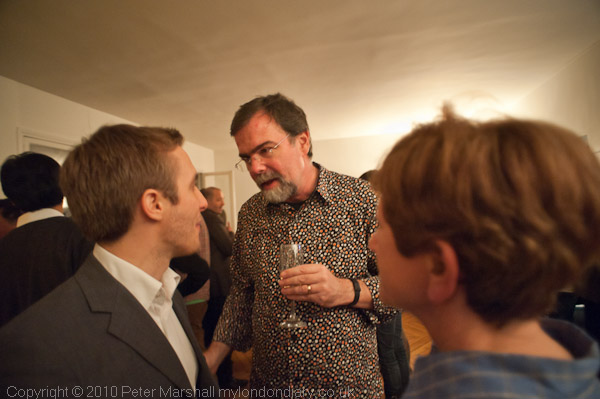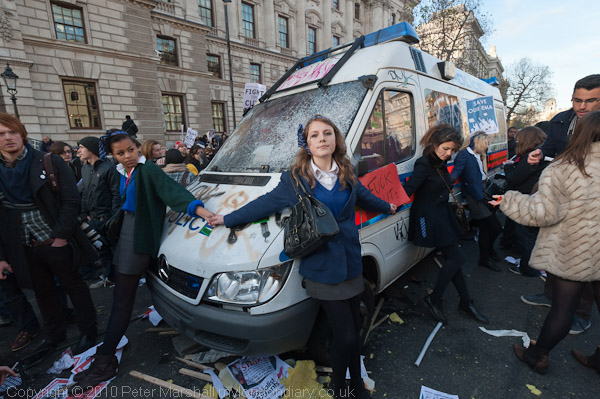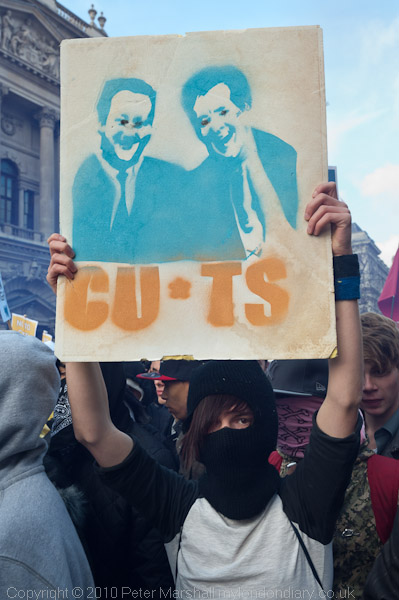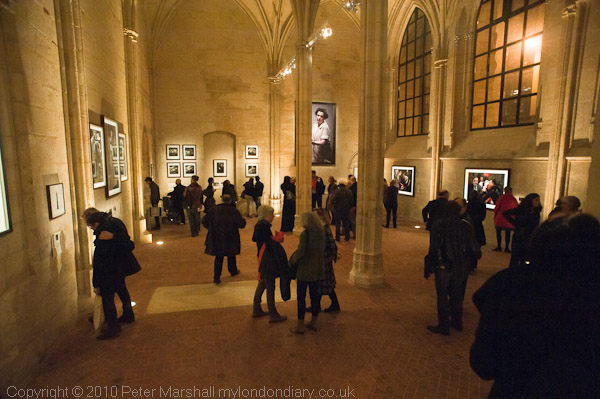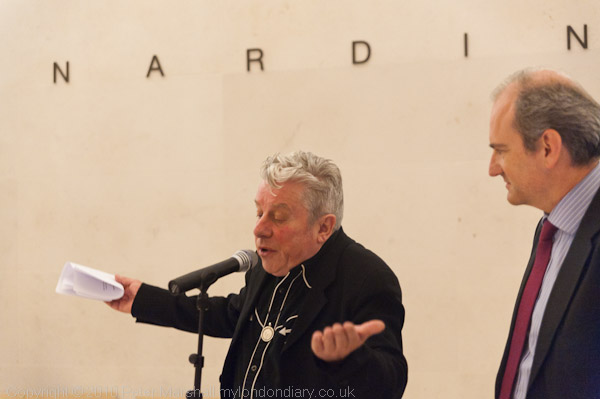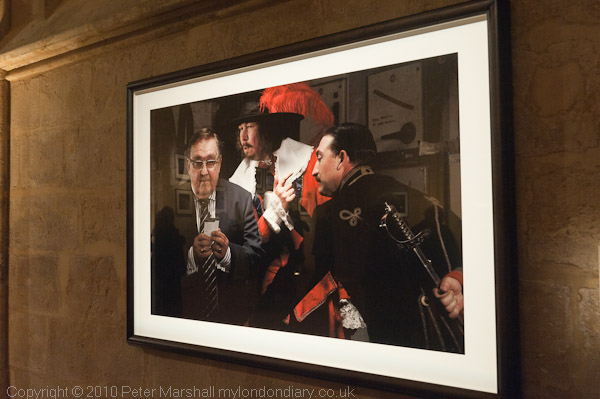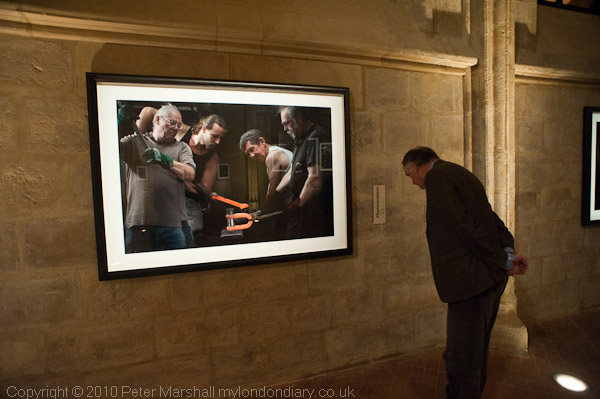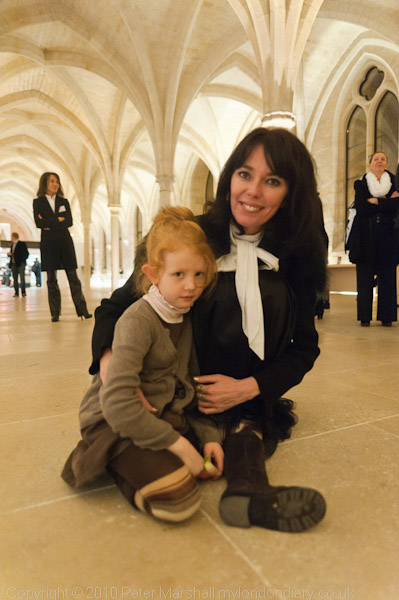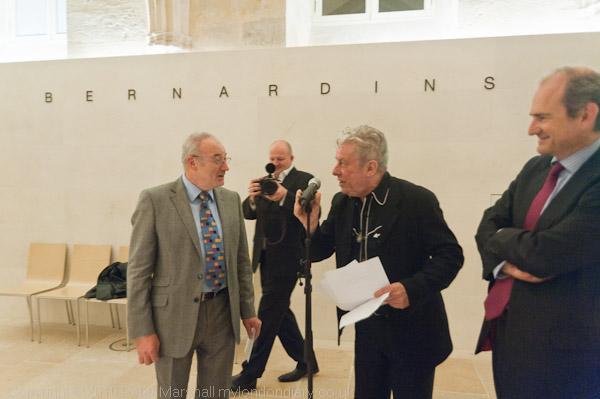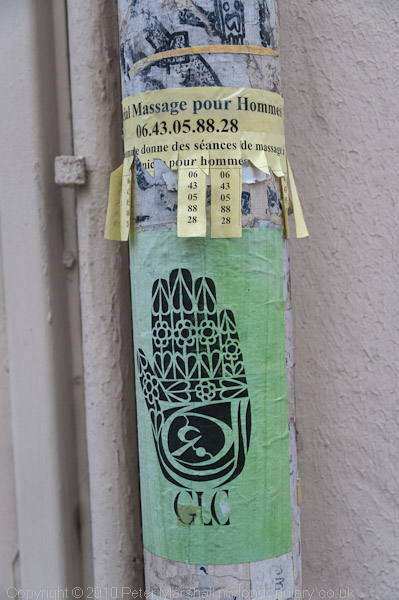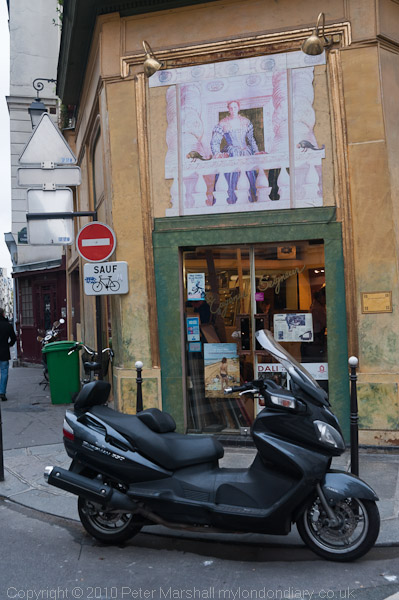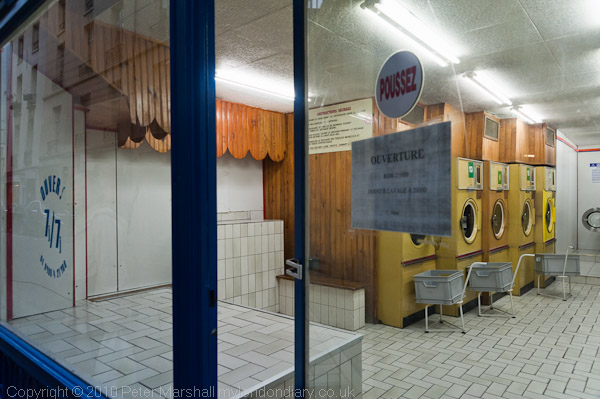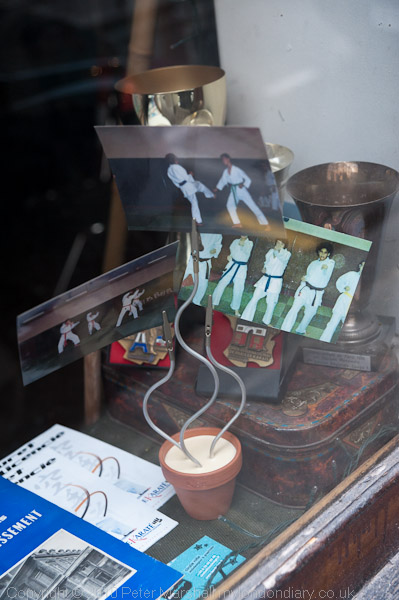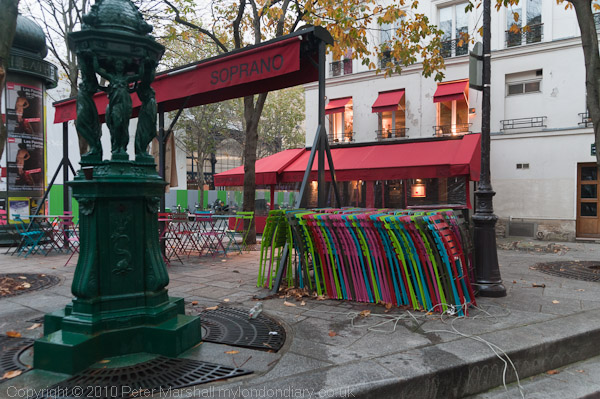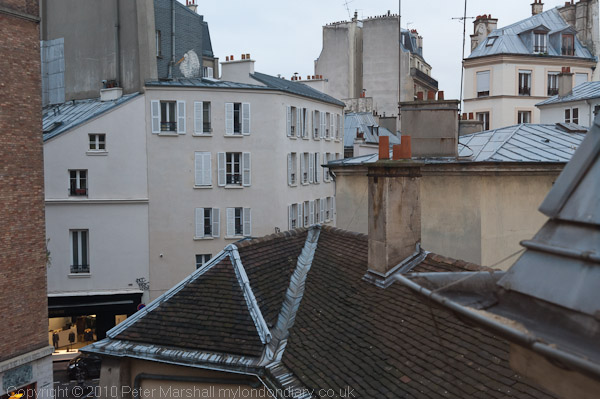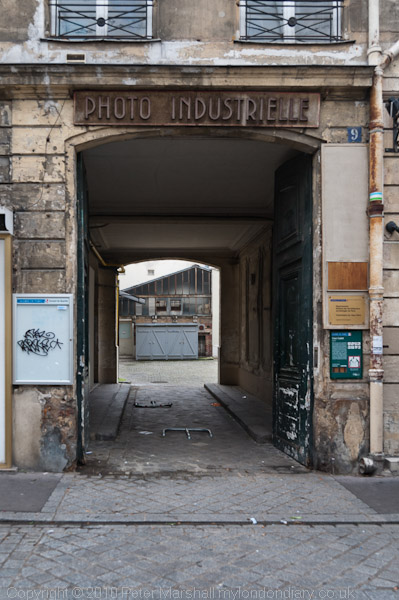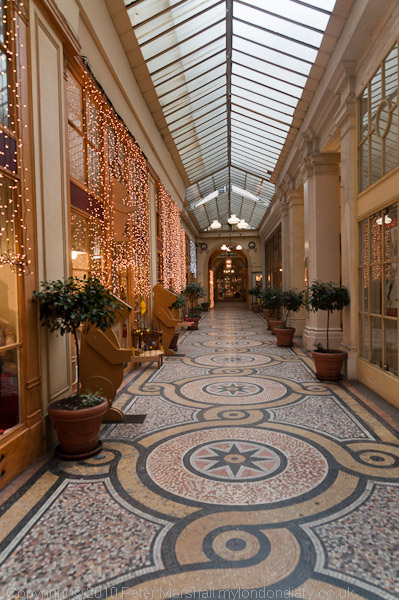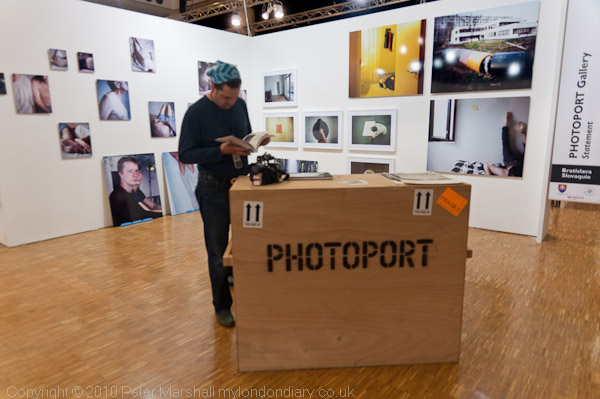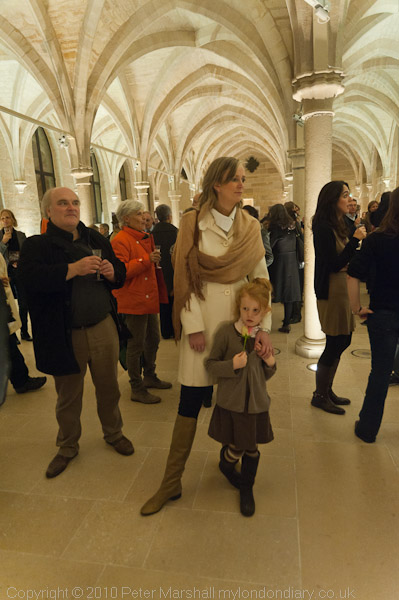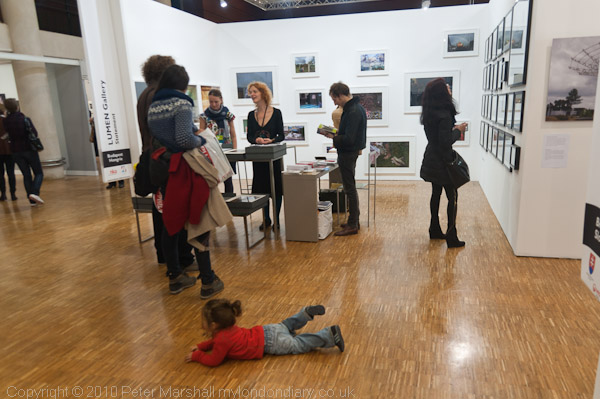
I’ve rather gone off the Left Bank, which has changed almost beyond recognition since I first went there more than 40 years ago. Then it had the charm of seemingly hundreds of years of neglect. Now virtually every one of the old shops is a gallery or some other establishment catering largely for the tasteless over-moneyed. In between there are a few good galleries – including many of the more than 30 showing photographs that we looked into on our late afternoon walk around the area – most were staying open until 7pm. As well as the 31 in Photo Saint-Germain-Des-Prés there were also several with shows in the Mois de la Photo, though unfortunately several closed too early for us to do more than look through a window (and the hours given in the MdP booklet weren’t always accurate.)
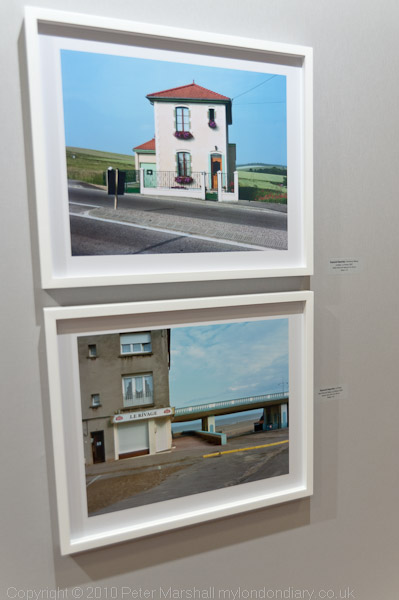
Depardon’s work on the Magnum stand at Paris Photo – the lower picture was my favourite from the show
We started at Magnum’s gallery just behind the former Abbey, which was showing pictures from two bodies of work by Raymond Depardon, a photographer whose work I’ve long admired. As well as the colour prints from La France de Raymond Depardon, there were also some black and white pictures from his ‘Errance‘. I was unimpressed by these – if anything they look slightly better in the book preview – and you can see 77 pictures in the album. I think the concept is too vague, and too few of the images really work for me (and those on show in Paris were not I think the best.) What they do of course show is Depardon’s interest in the urban environment, and that continues in the considerably more impressive colour work.
The Magnum page on the main exhibition of ‘La France’ which continues at the Bibliothèque nationale de France until 9 Jan 2011, has some curious difficulties, perhaps largely from translation. Here is a sample:
“The main features of Depardons full of empathy former works were the contrast effects of black and white photographs and the use of a dynamic depth of field. This time, he preferred frontality and the use of the photographic chamber, colour, and a soft, neutral and unique light. The photographer sometimes preferred landscapes to human beings; however, it is a way « to focus on human influence which modified landscapes throughout history. »”
The next paragraph starts by talking about the work on display as a “series of 36 very large silver prints.” Of course as anyone with any knowledge of photography can see from that link (which shows the 36 colour images) they are not silver prints at all. What I think they meant to say was that these are colour images taken on film using a large format camera.
I don’t know how they were printed, but I think it unlikely that Depardon actually polished the scans as they suggest, although he may well have worked on them considerably at the computer, and possibly not entirely to their benefit. The colour in all those I have seen is, to my eye, over-saturated, almost garishly so in a few of the prints at Magnum, although others were more realistic. I did find myself thinking while I looked at them that it might well have been a better show had he worked with digital!
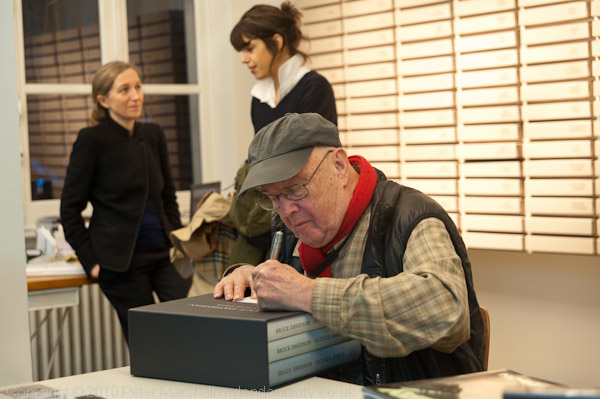
Bruce Davidson and a rather heavy three volume book at Magnum Gallery
His work is interesting, and very different to the view of France by Thibaut Cuisset I had seen a short while earlier, some of the pictures in which were also taken on the edges of urban areas. Depardon’s book too looked good, but far too heavy to carry, and the same was even more true of the volumes which Bruce Davidson was signing while we were there.
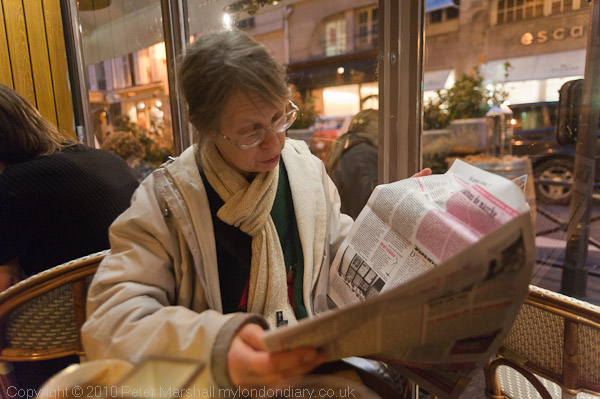
Our next stop was a cafe – I needed a beer and Linda would have liked a nice cup of tea, but this was France, so I think she settled for a coffee – like everything else round here rather on the expensive side. But then we pressed on.

Closer to the river on rue Bonaparte were two shows by photographers I’ve actually met, Eikoh Hosoe, seen above photographing in Poland (more pictures here) at Galerie Photo4, and Ralph Gibson at Galerie Lucie Weill & Seligmann next door, who made some generous comments when I showed him my work in London many years ago (including some of the pictures I later showed and put on the web as ‘Ideal Cafe, Cool Blondes and Paradise‘.) For me there was nothing new there, but it was good to see some of the work again. Gibson is a photographer who has rather gone out of fashion in the UK (and I think USA), probably now more regarded for his Lustrum Press rather than the actual pictures in books such as ‘Days At Sea‘ but he has remained rather bigger in France.
Another of the MdP shows was by Mac Adams, in Galerie Serge Aboukrat in place Furstemberg. Born in Wales but a US citizen, he is an artist whose photographic work I’ve never really appreciated, even when I can see his idea, visually it seldom seems to me to offer enough. This show didn’t help, though you can download a well-illustrated pdf from his site which is rather better.
Many of the other thirty or more galleries we visited – including some not listed on the ‘Parcours’ map – merited nothing more than a quick visit, but there were things of interest, including vintage work on Paris in the windows of Agence Roger-Viollet (I particularly liked an image of Delbord diving into the Seine with his bicycle as a part of the 1913 French diving championships on the Île des Cygnes – there is a larger version on Getty) and the surrealist images at Galerie les Yeux Fertiles. But there were also galleries full of rather stylized portraits and other work which while often technically excellent I failed to see much interest in, along with just a little of the kind of anaemic soft-porn that sometimes passes as art in France.
But at the end of our long and complicated walk we came to the Galerie Arcturus, showing Marc Riboud‘s ‘Icônes et Inconnues‘ and it was a joy to look at some of his great work. One image I don’t remember seeing before was of a street that could only have been in the north of England, taken in Leeds in 1954, a bowler hatted man in a raincoat with a stick struggling forward head down in the foreground while two women in coats and hats, one holding her shopping back chat in the road on the street corner, terraced houses leading down through the murk towards the gas holder.
By now – and perhaps more suitably for Leeds than Paris, it was cold and wet and we were in need of sustenance. Fortunately we’d come to the end of the parcours and we rushed to the Metro to get to a cheaper and more down to earth area.
UPDATE:
PARIS PHOTO SUPPLEMENT is now on MY LONDON DIARY
- Wednesday
- Thur am: 9e, 2e & Paris Photo
- In the 3eme
- Brian Griffin – The Black Country
- Jim & Millie’s Party
- Wandering in the 20e
- Lab East at Paris Photo
- To Saint-Germain-des-Prés
- Montmartre at Night
- Street Photography in the 10e
- Guided tour of the Photo-OFF
- Dinner at Chartier
- The Marais
- BnF and FIAP
- Monday Wandering
